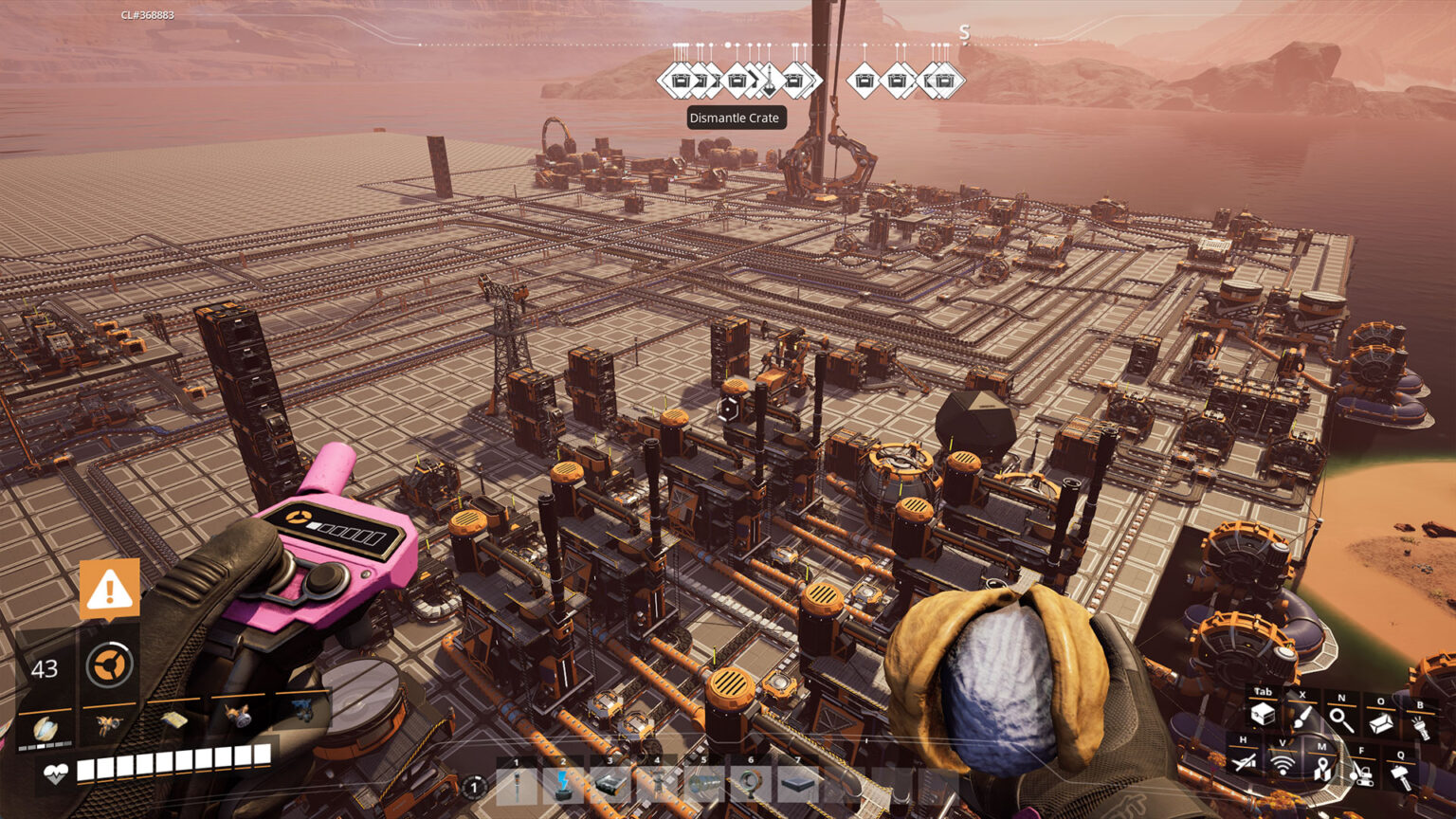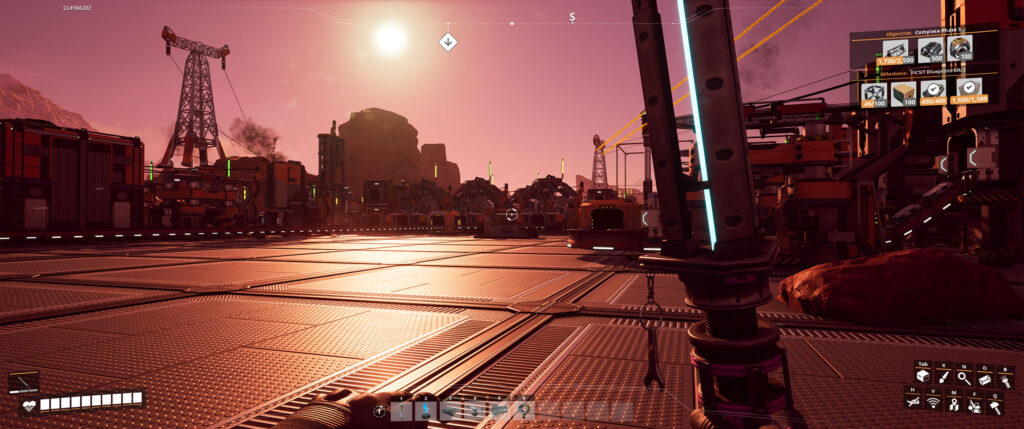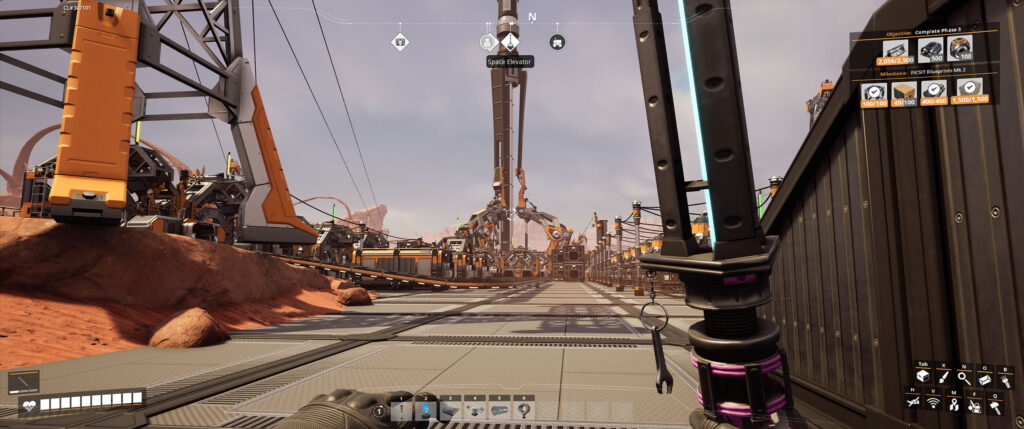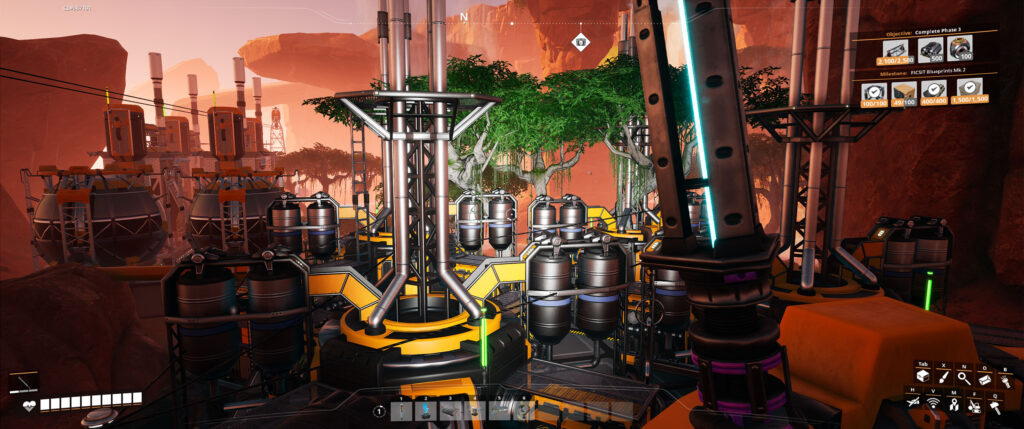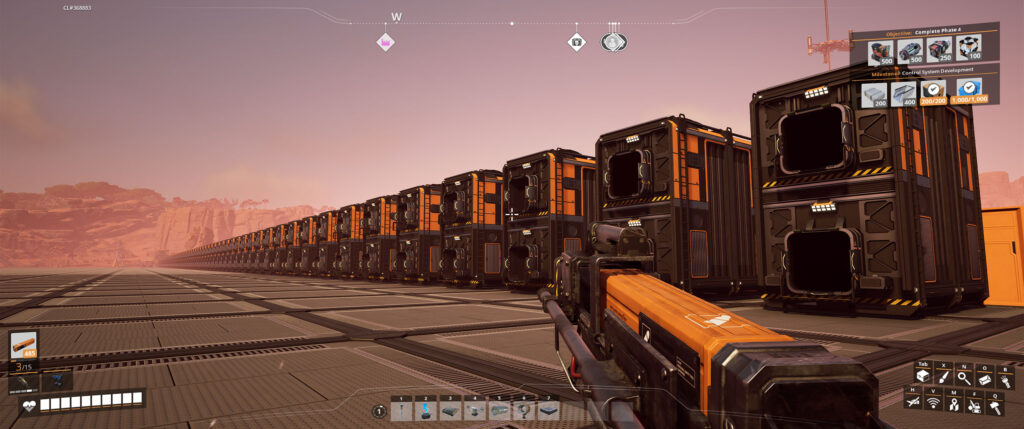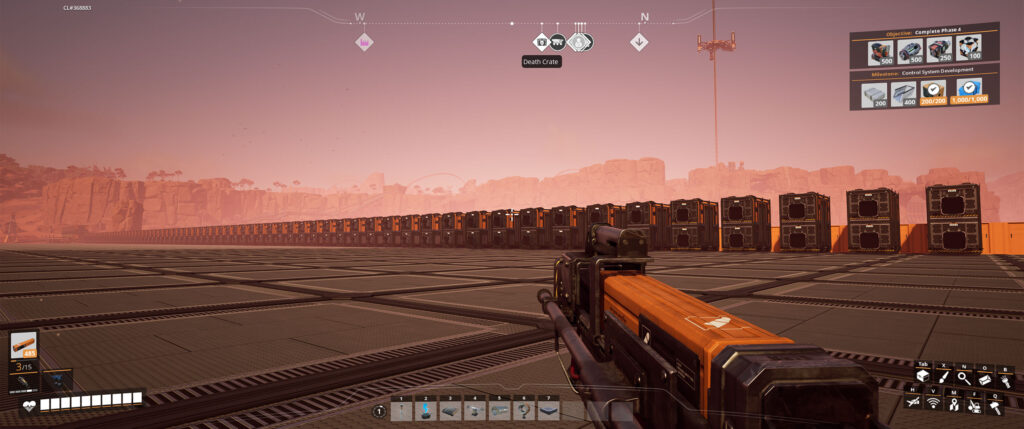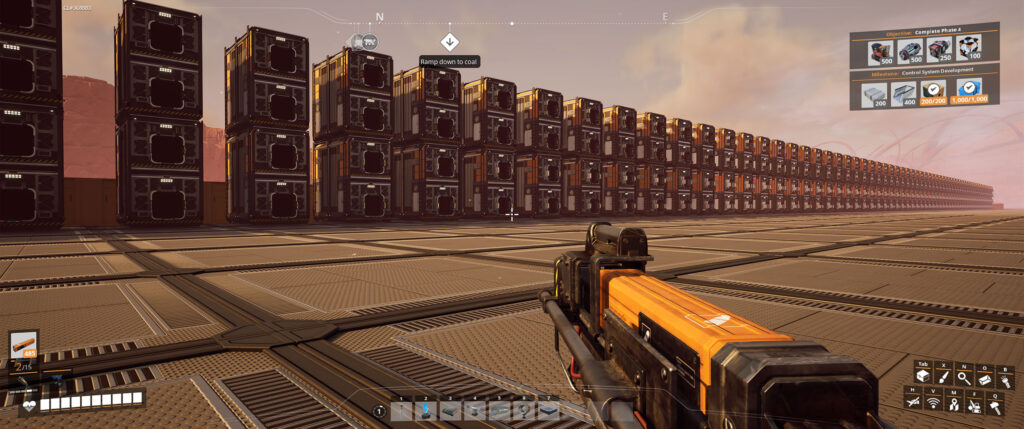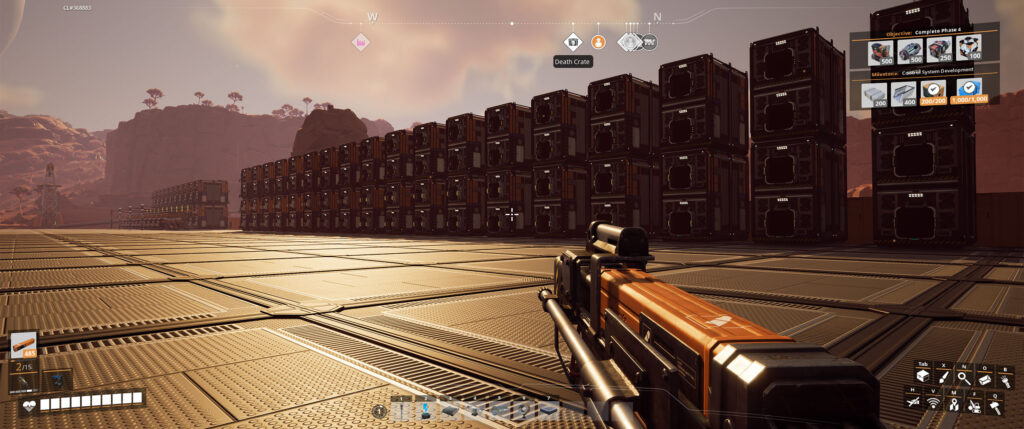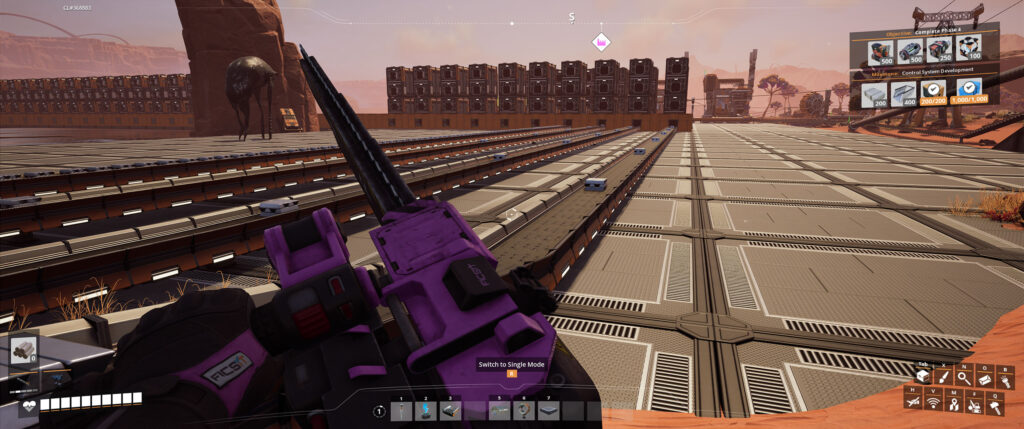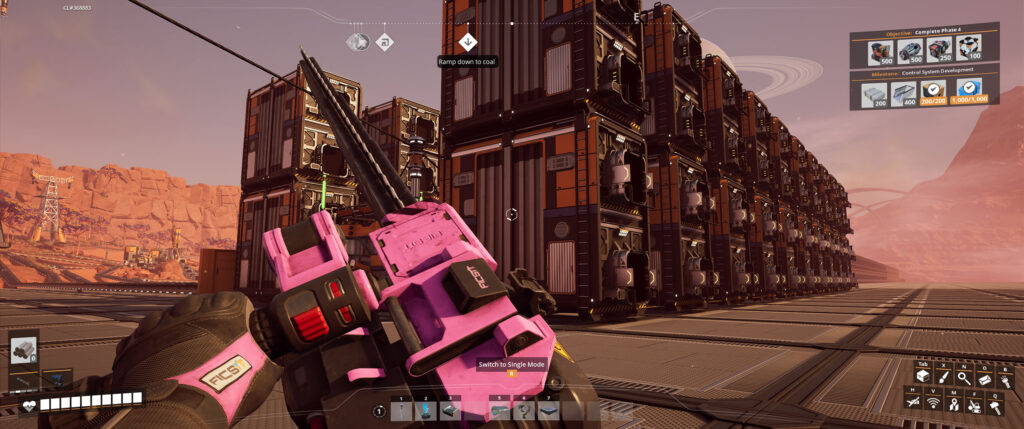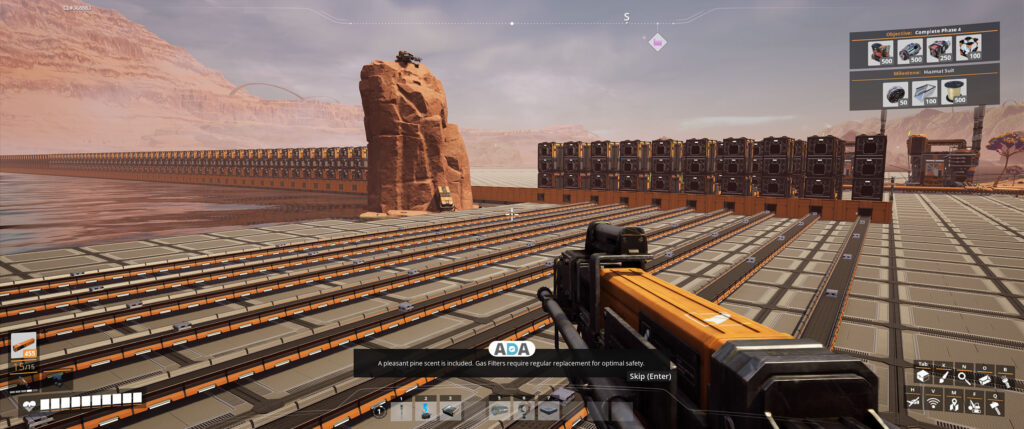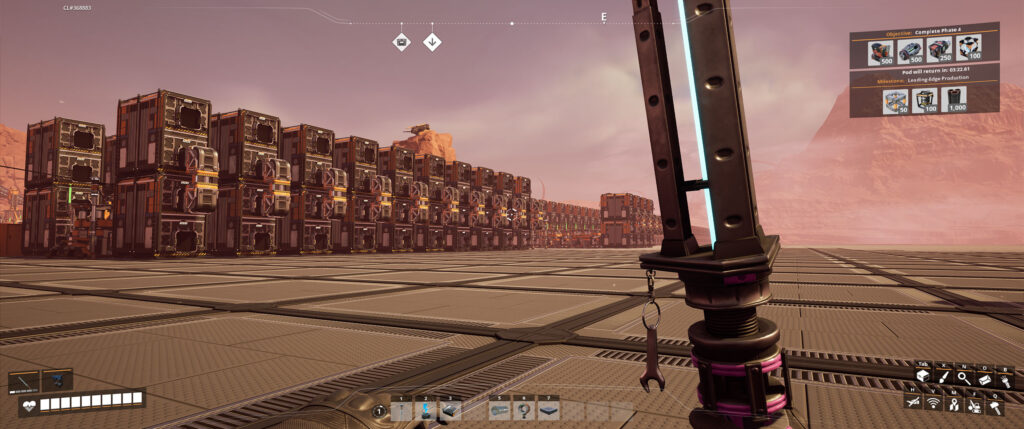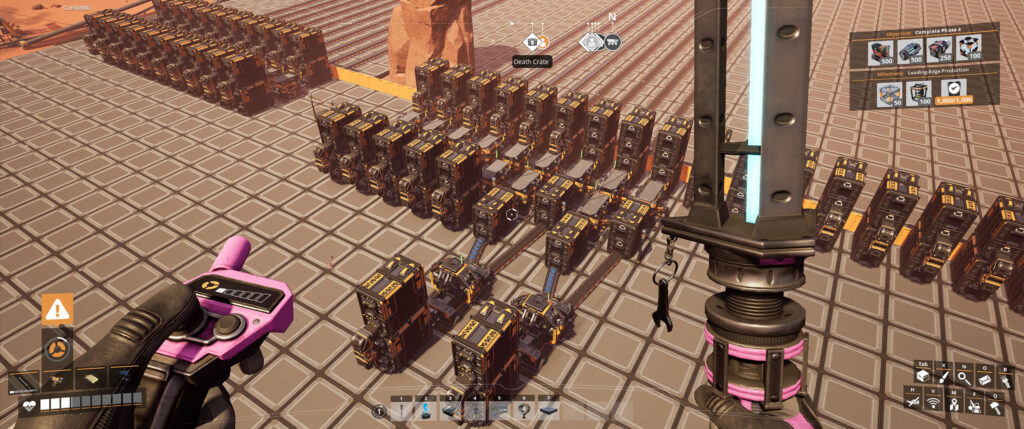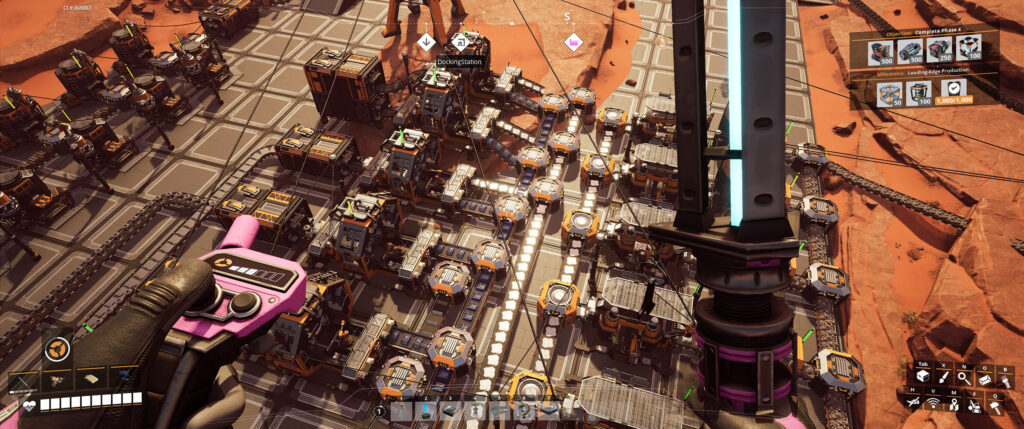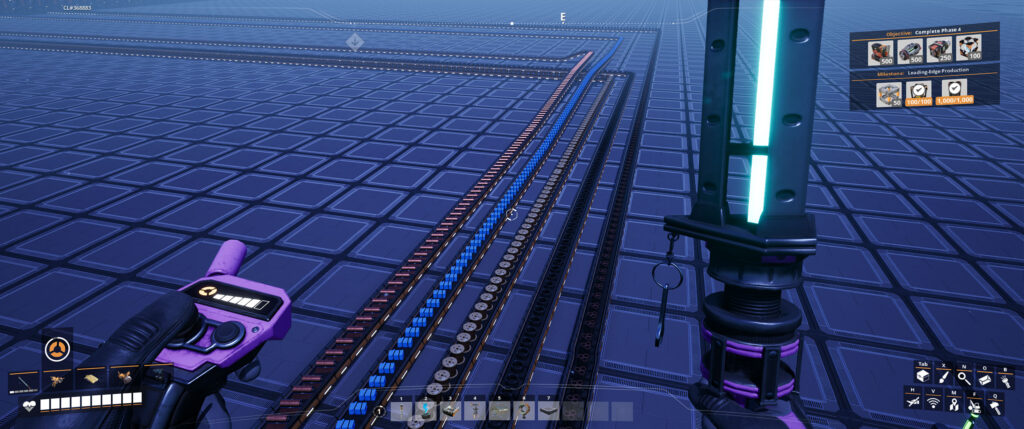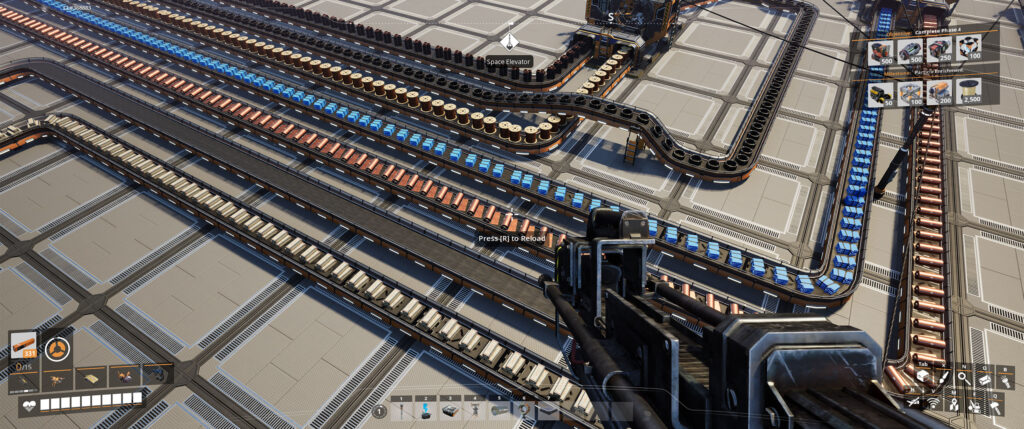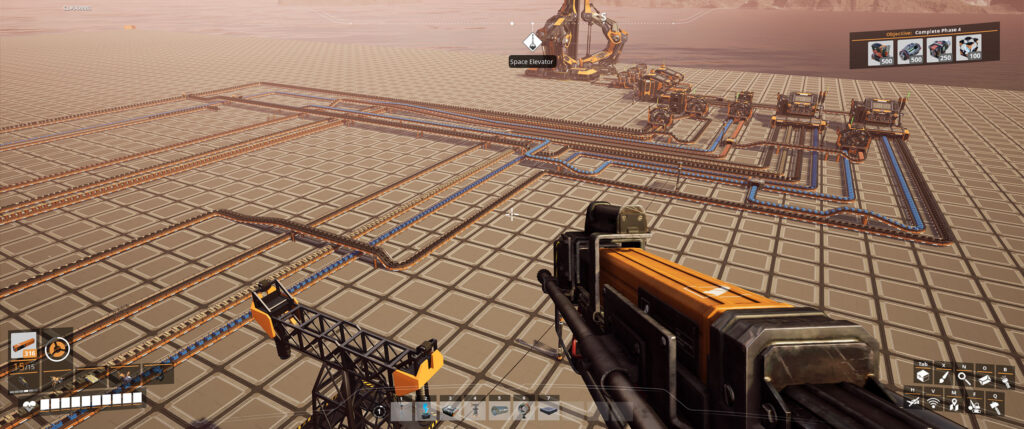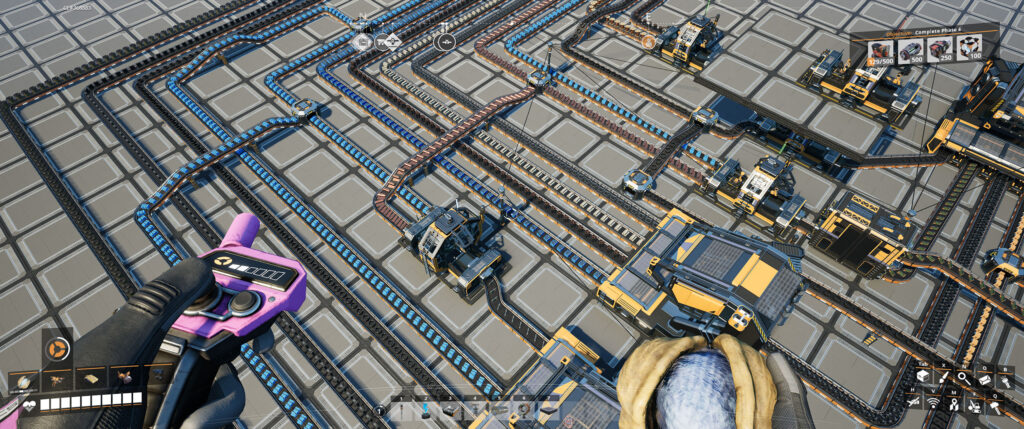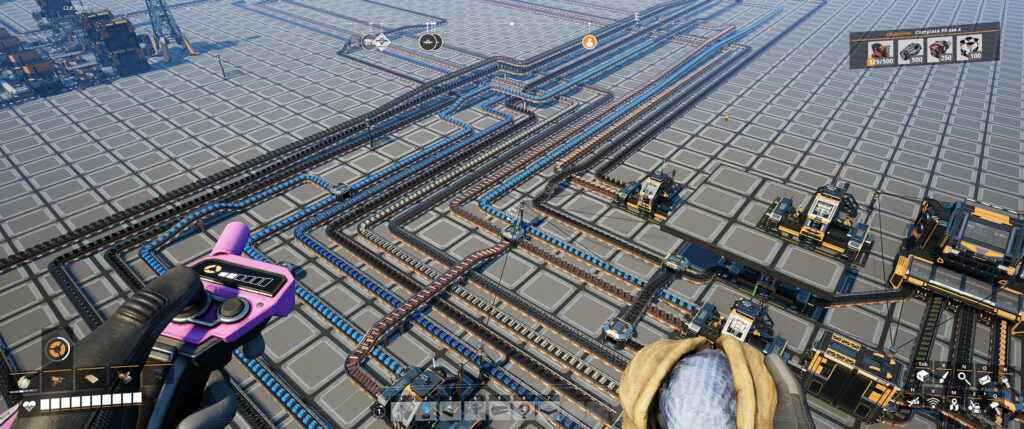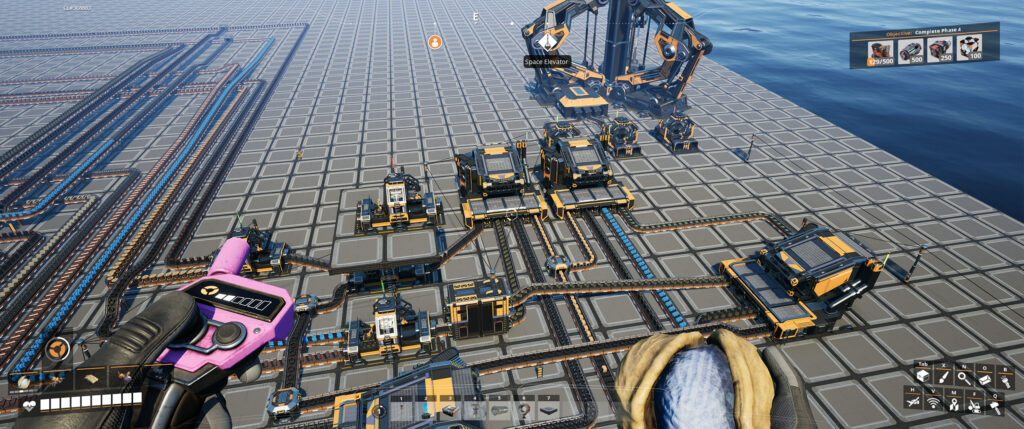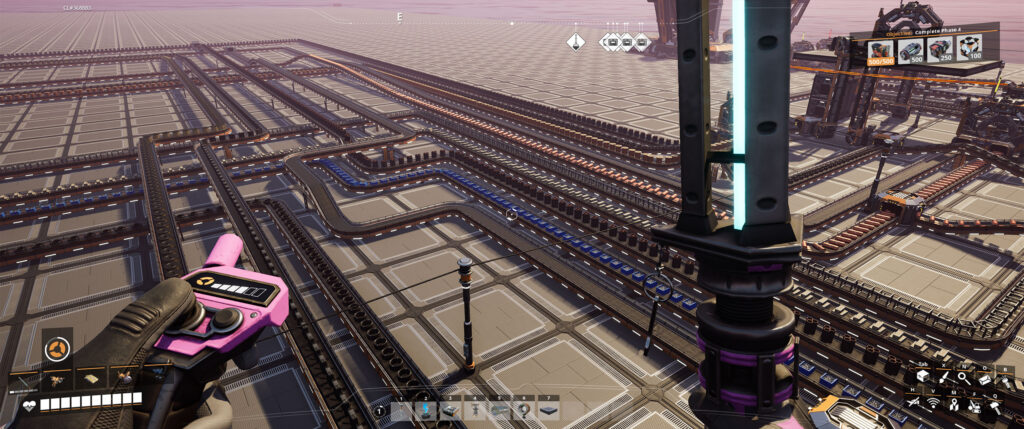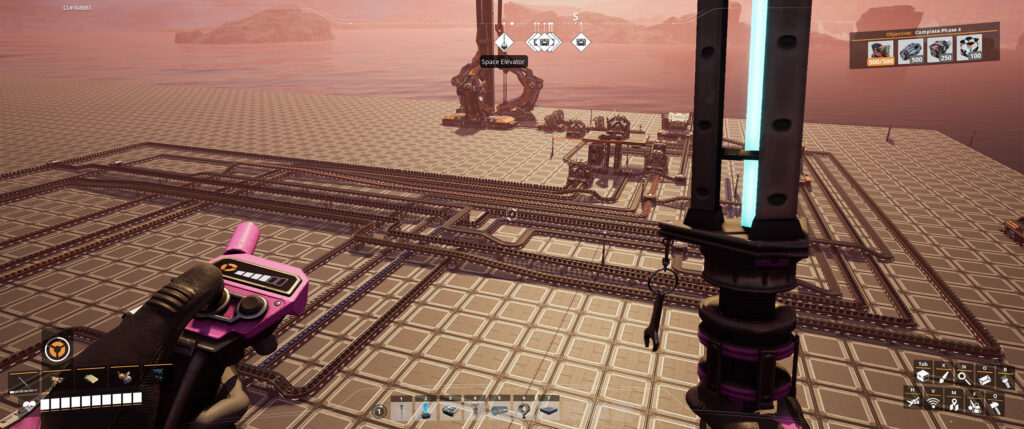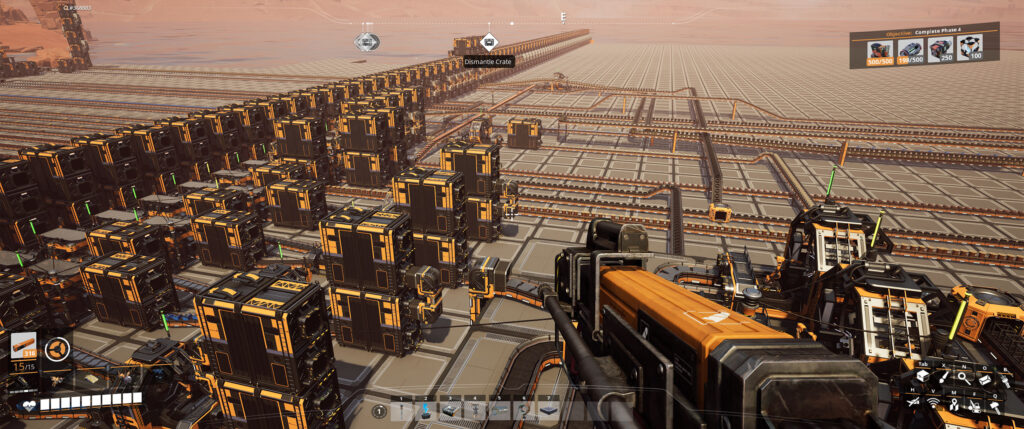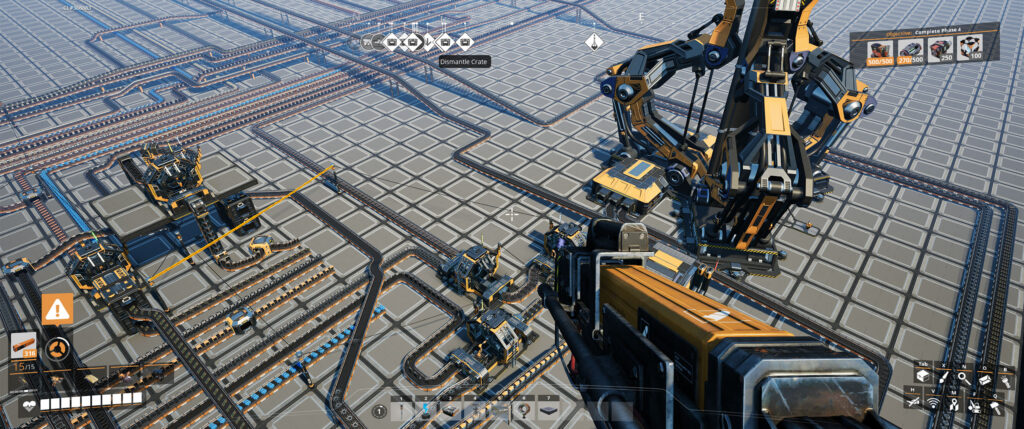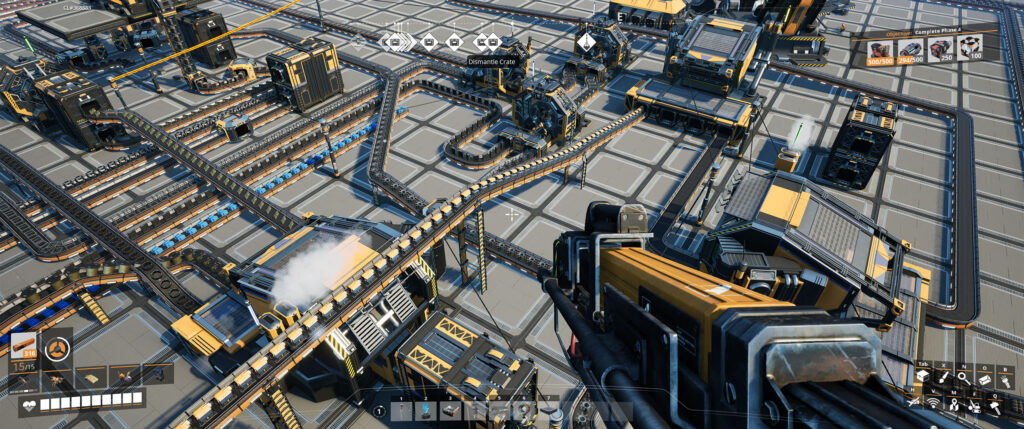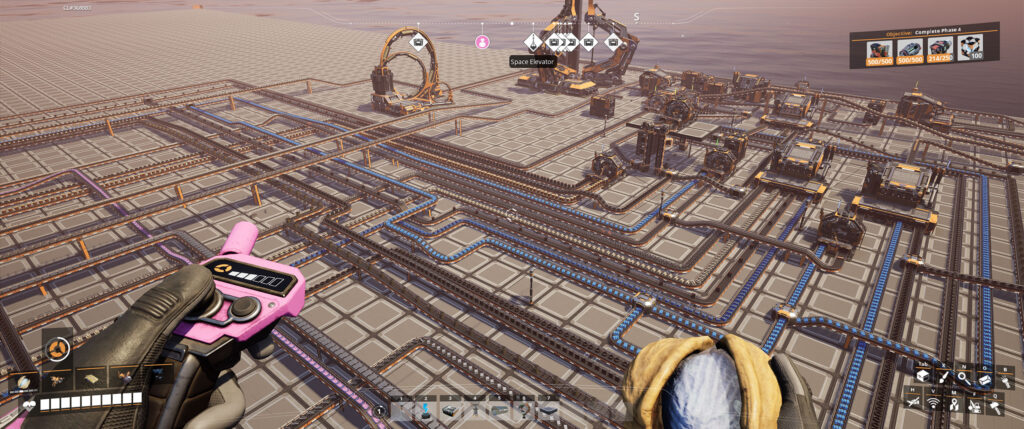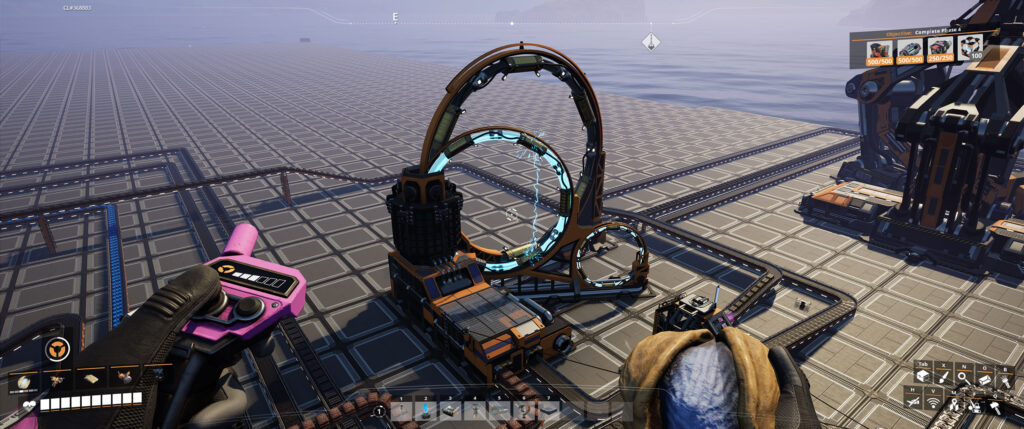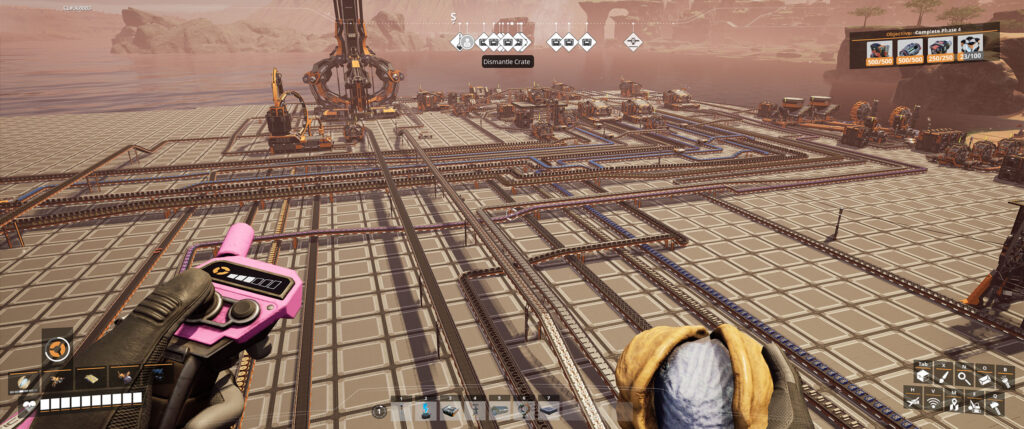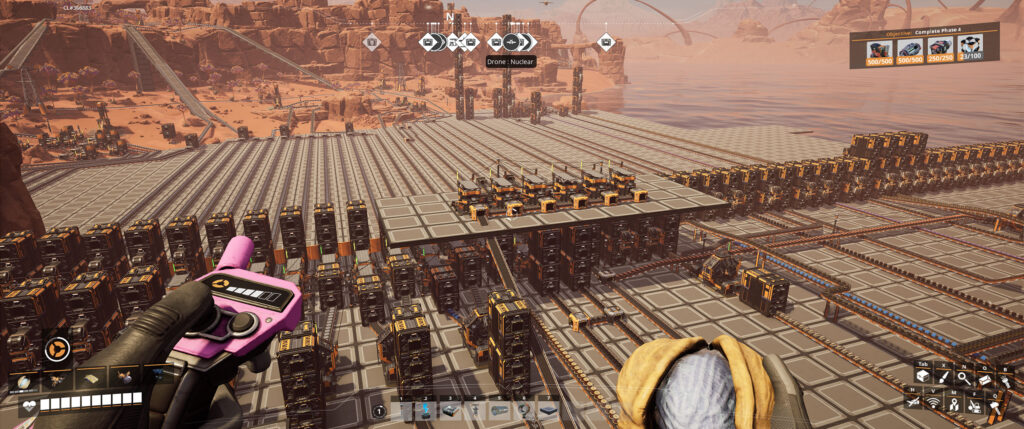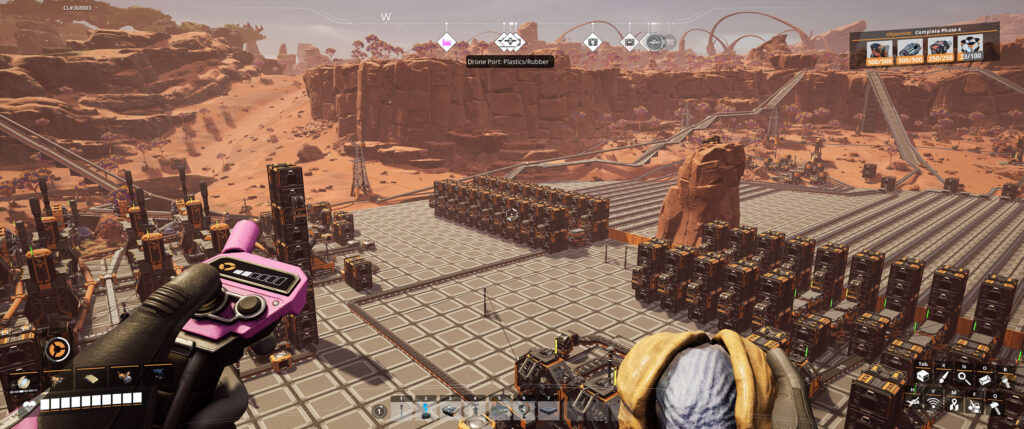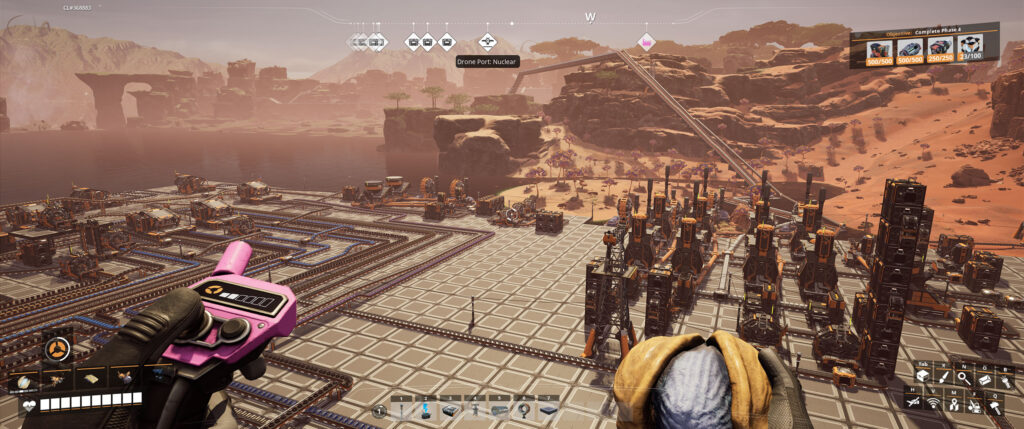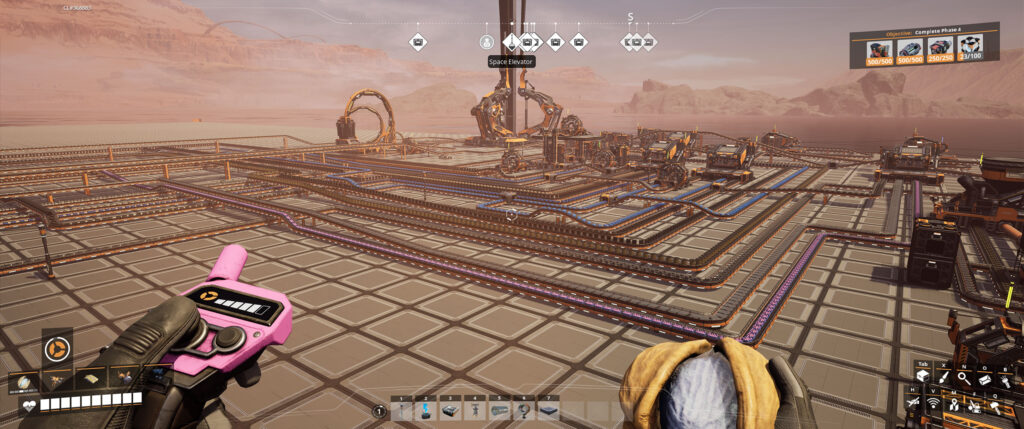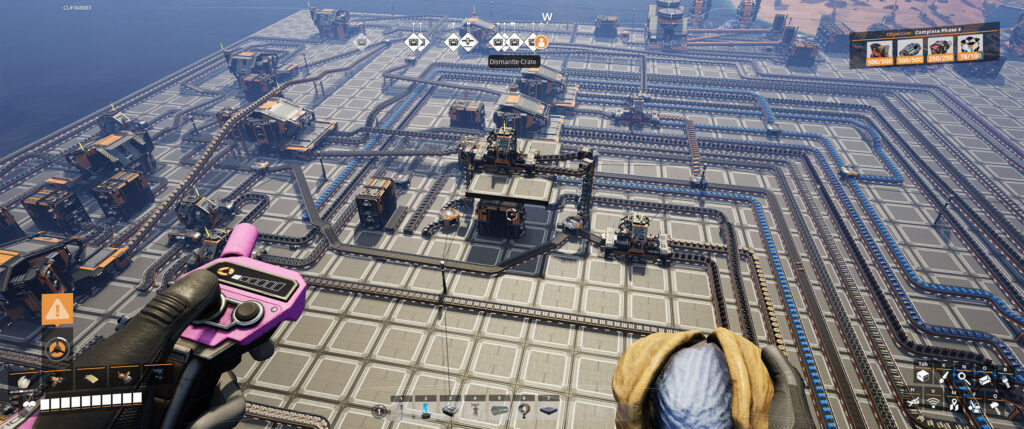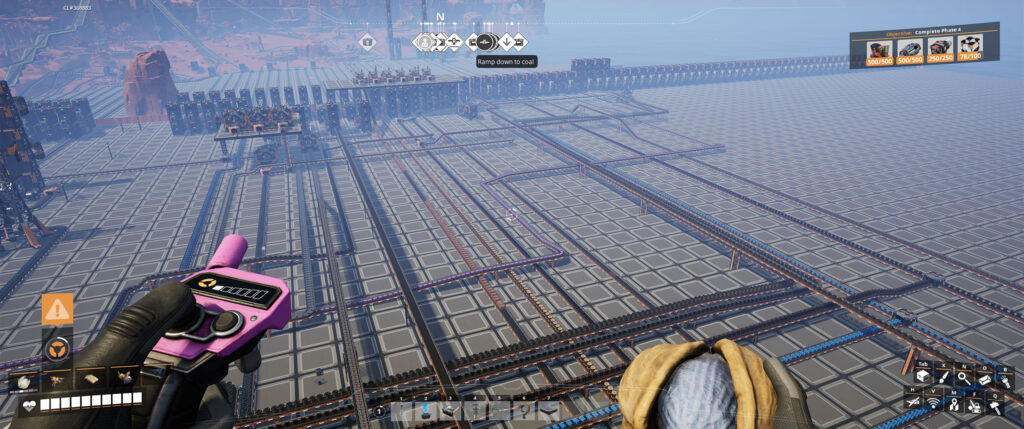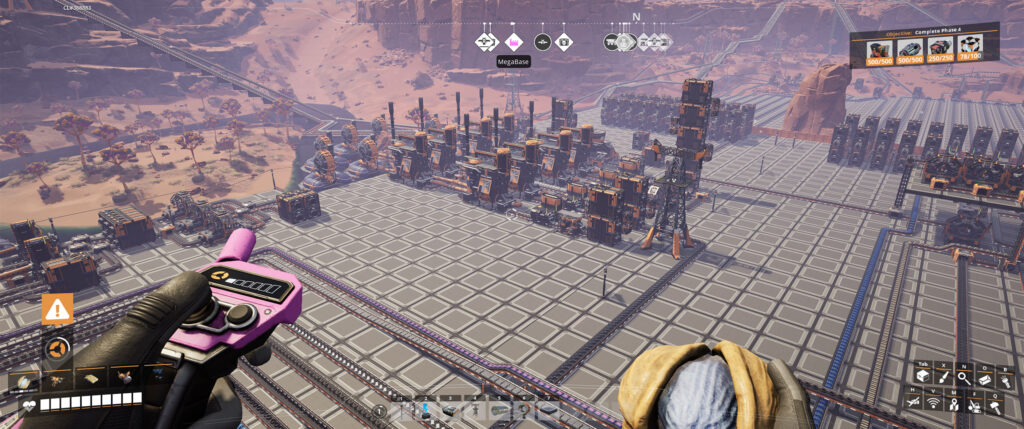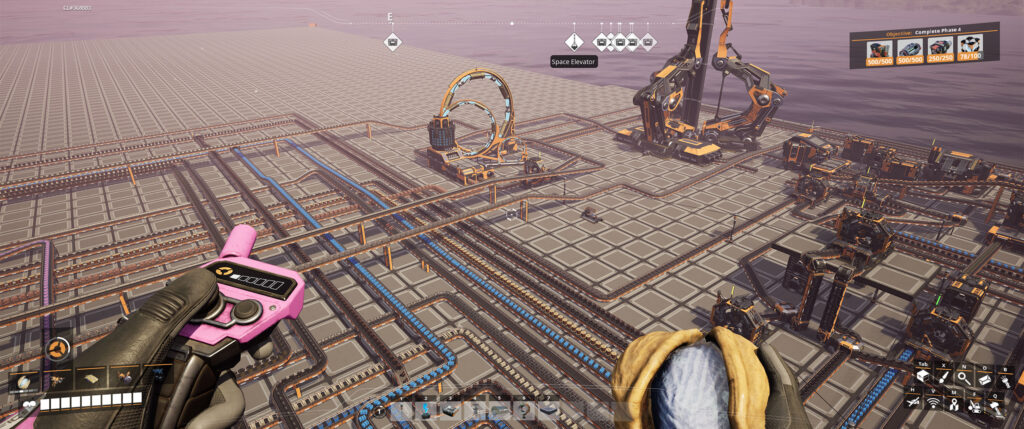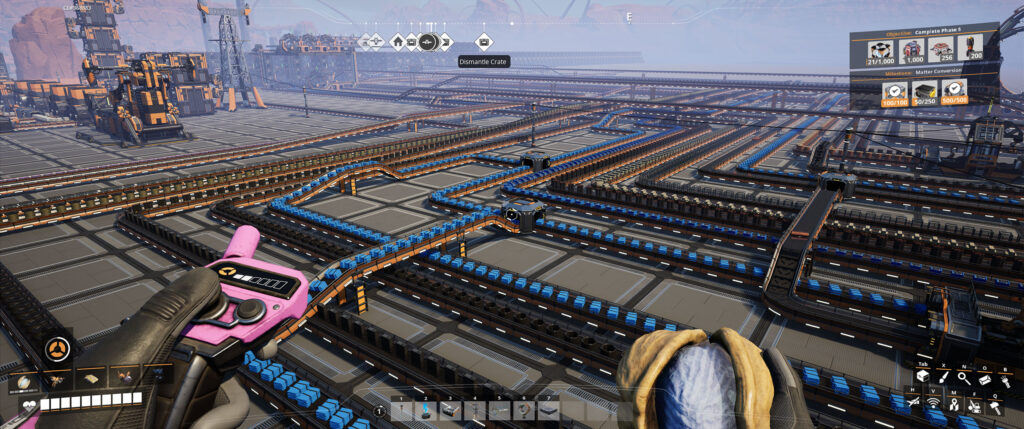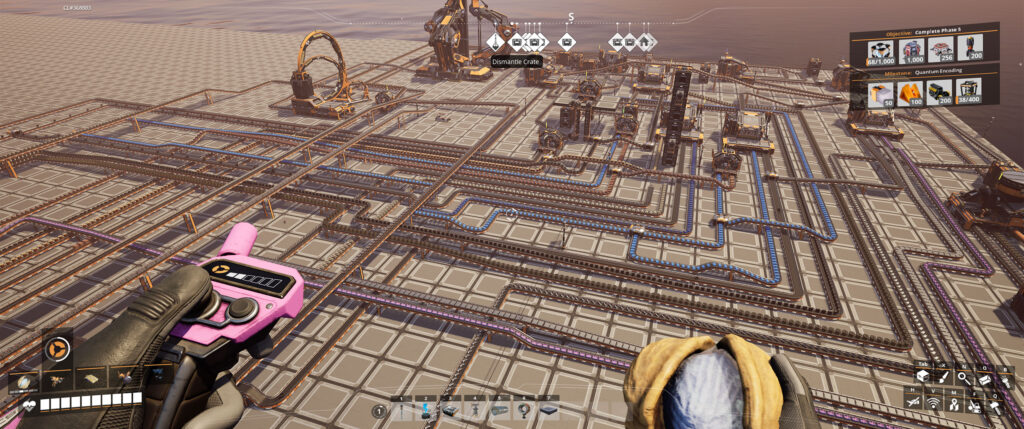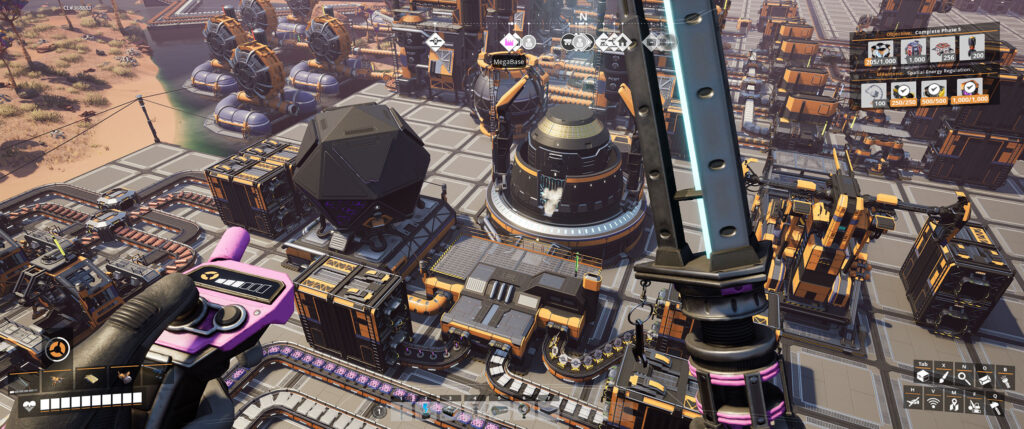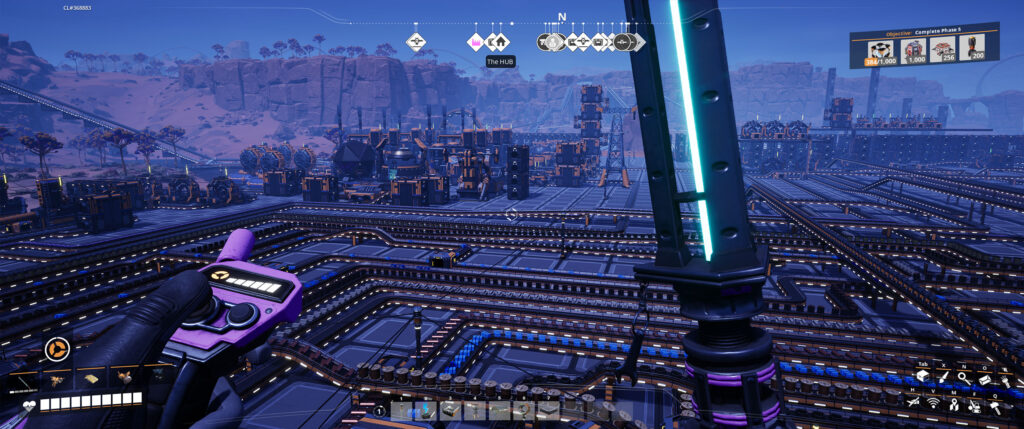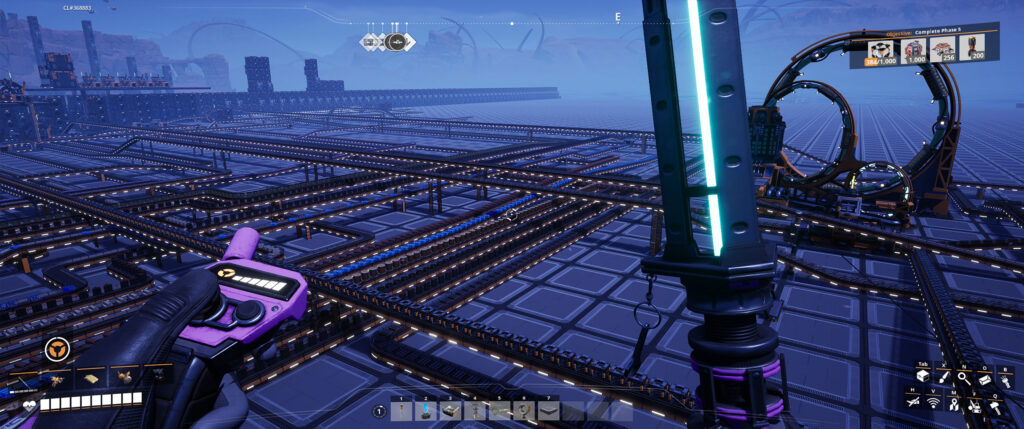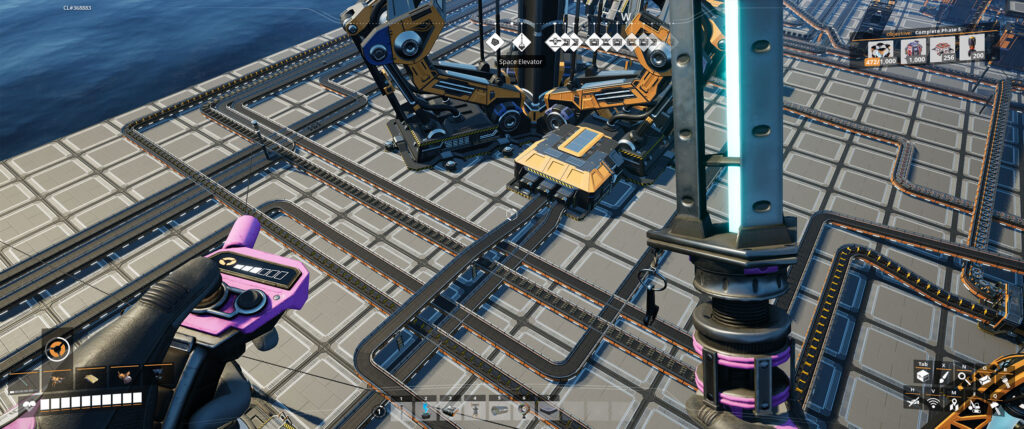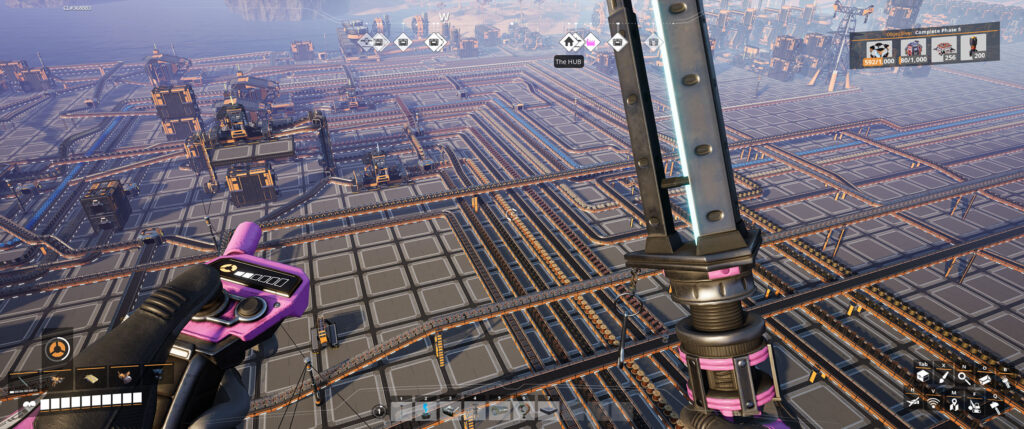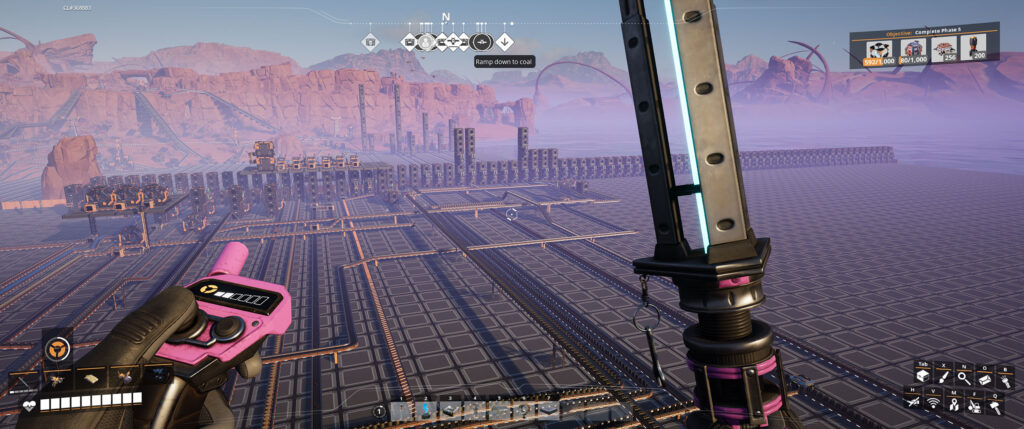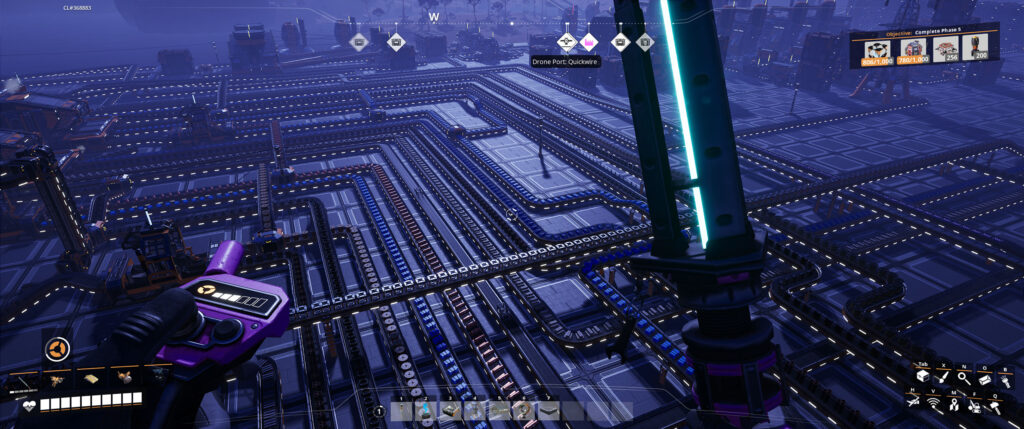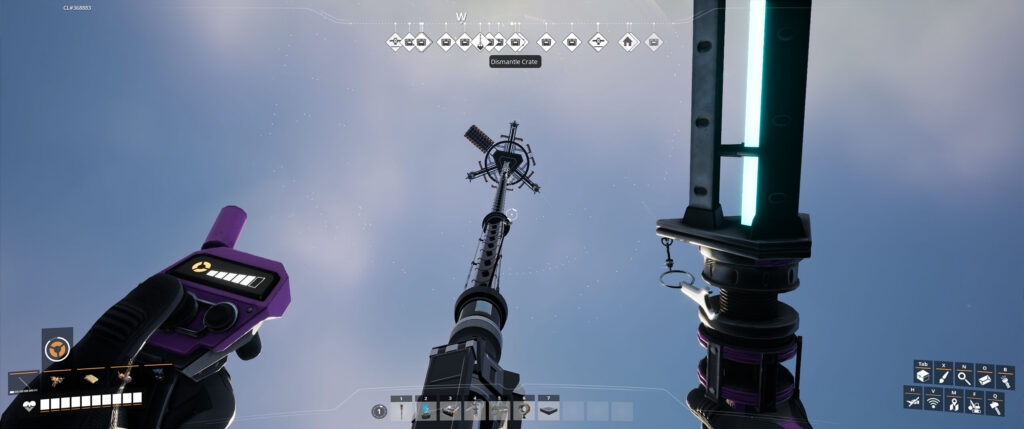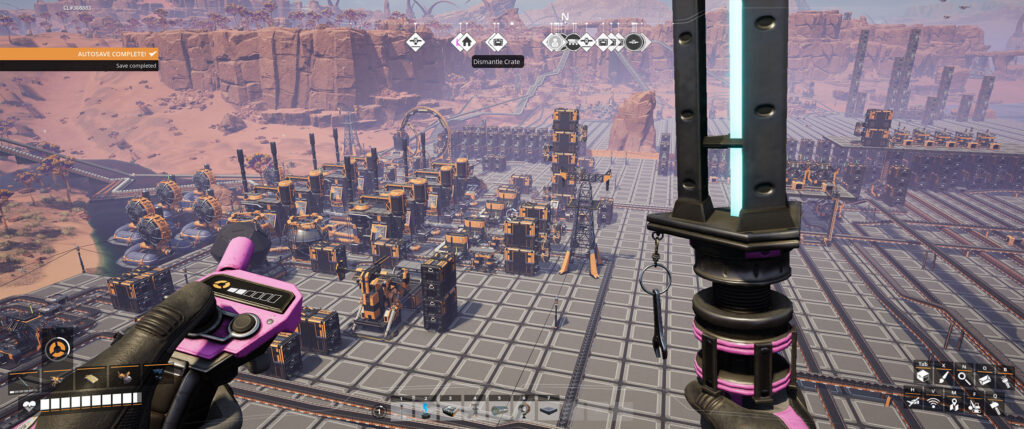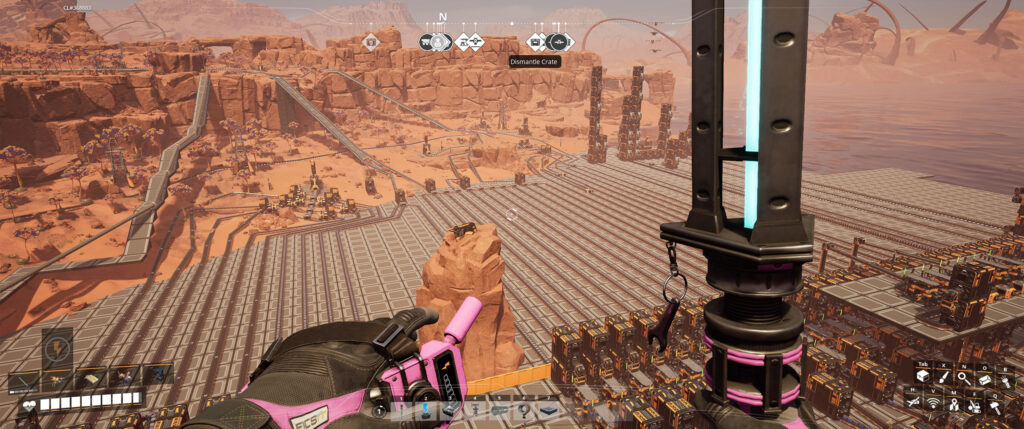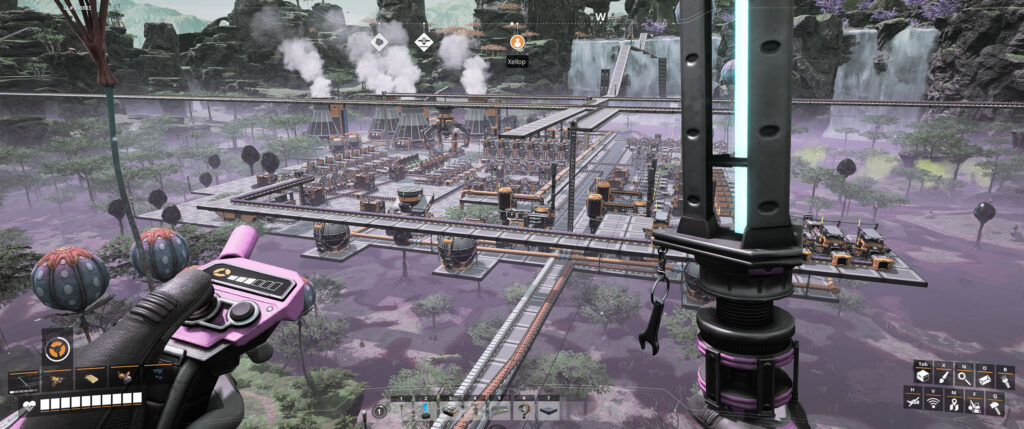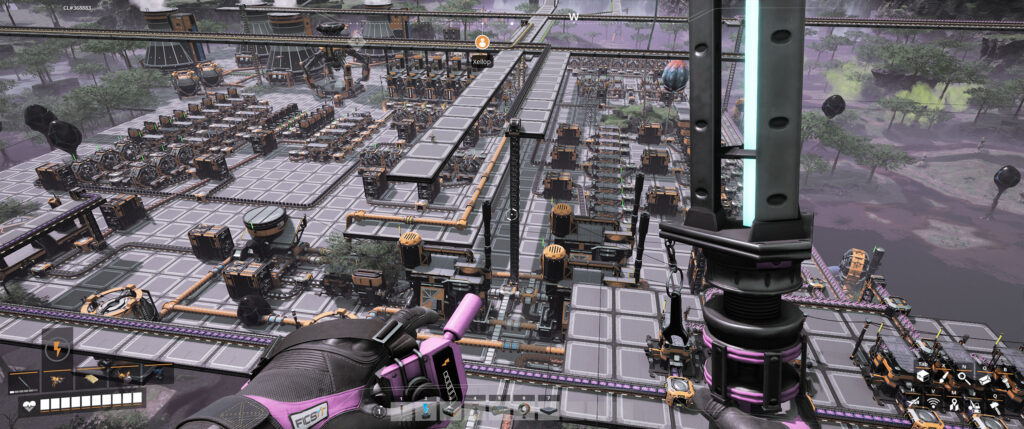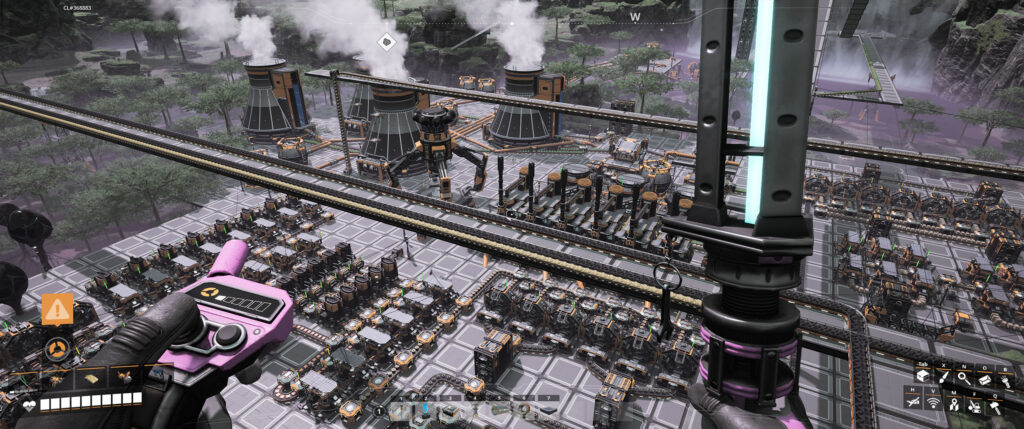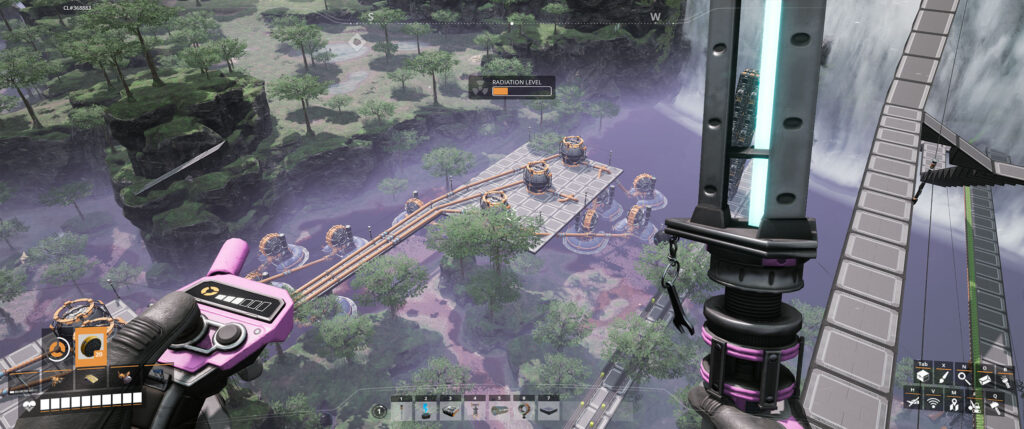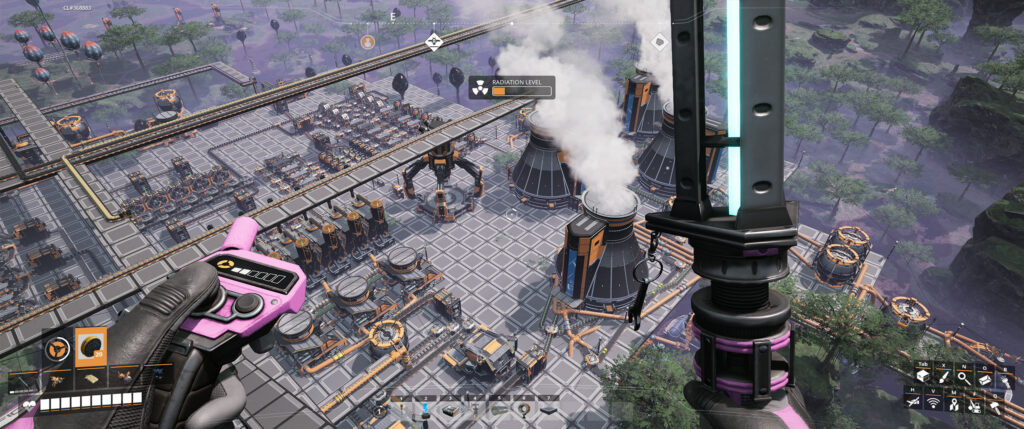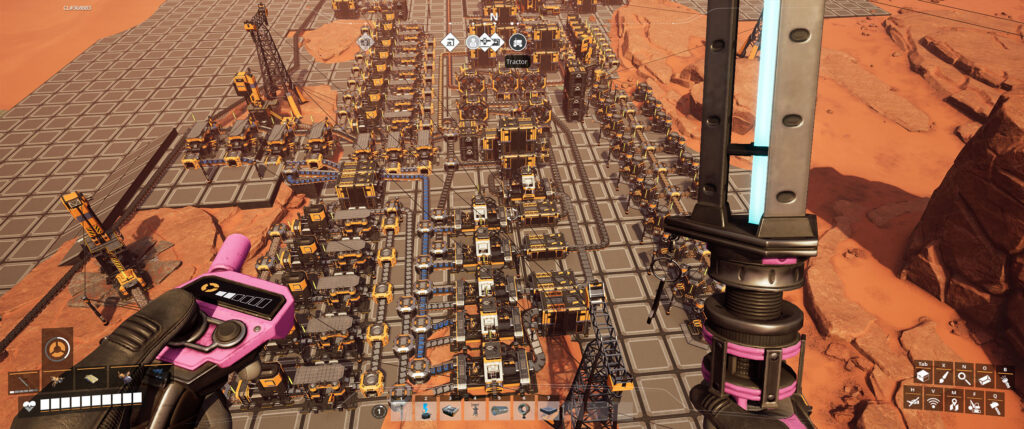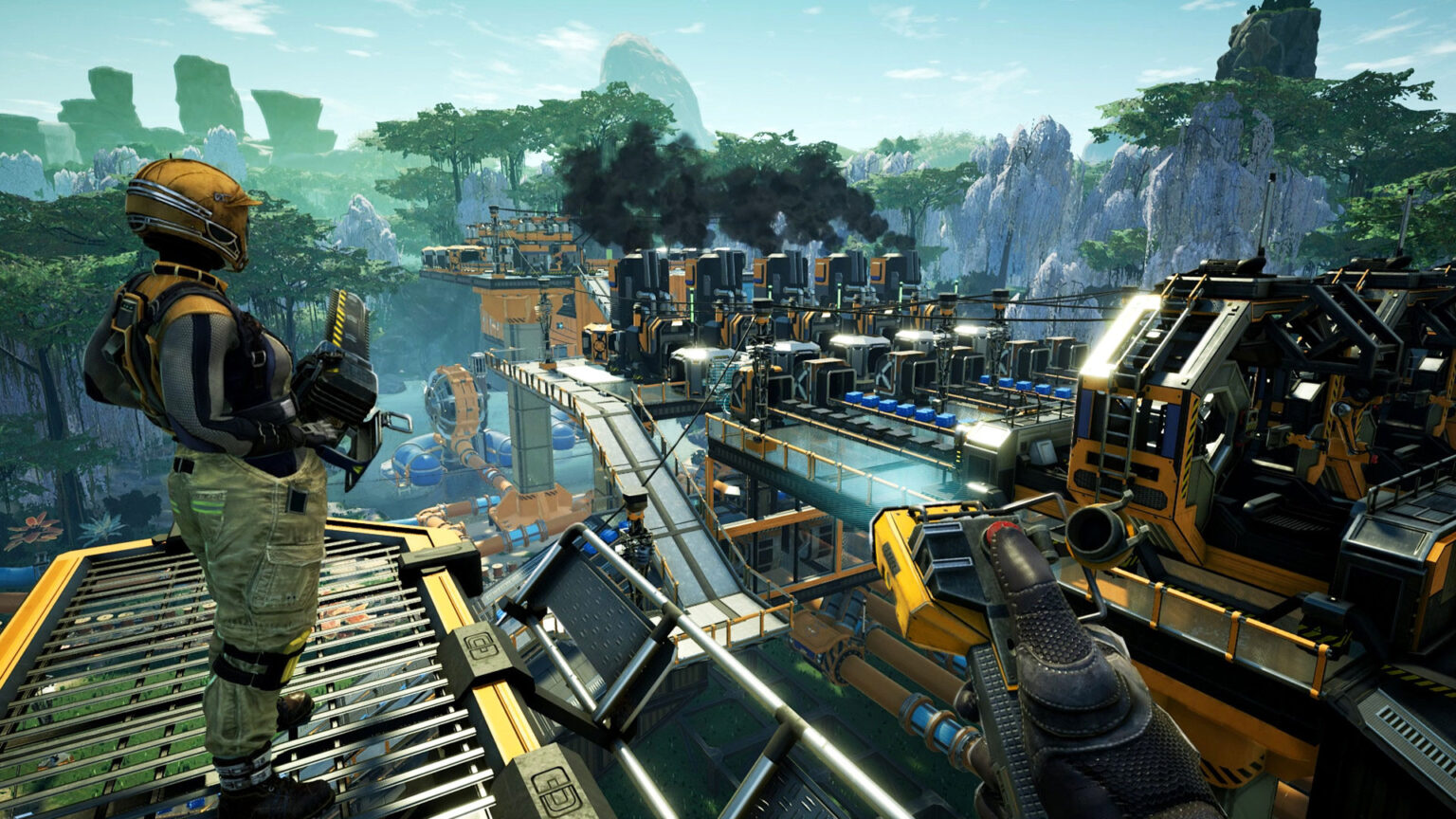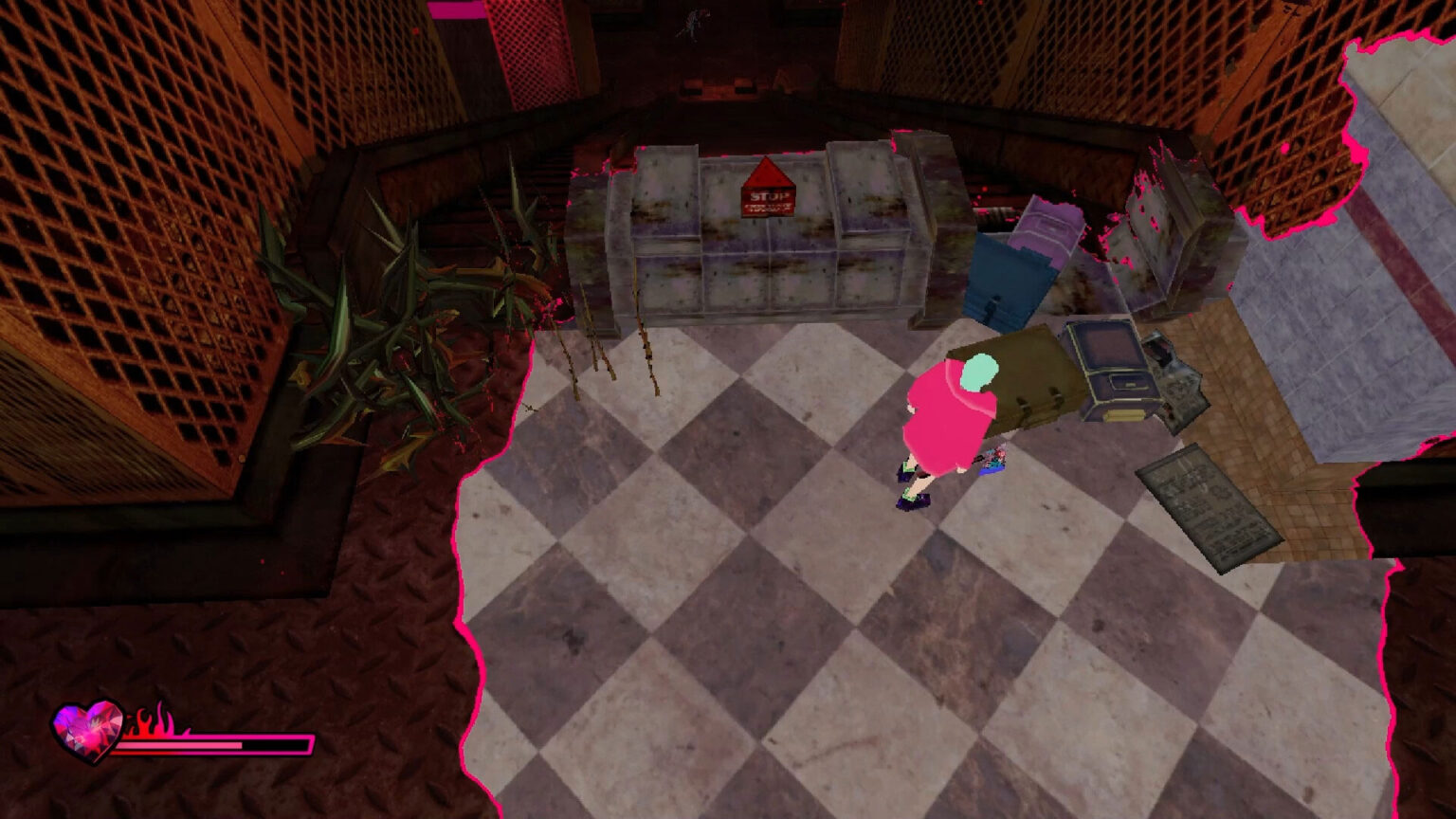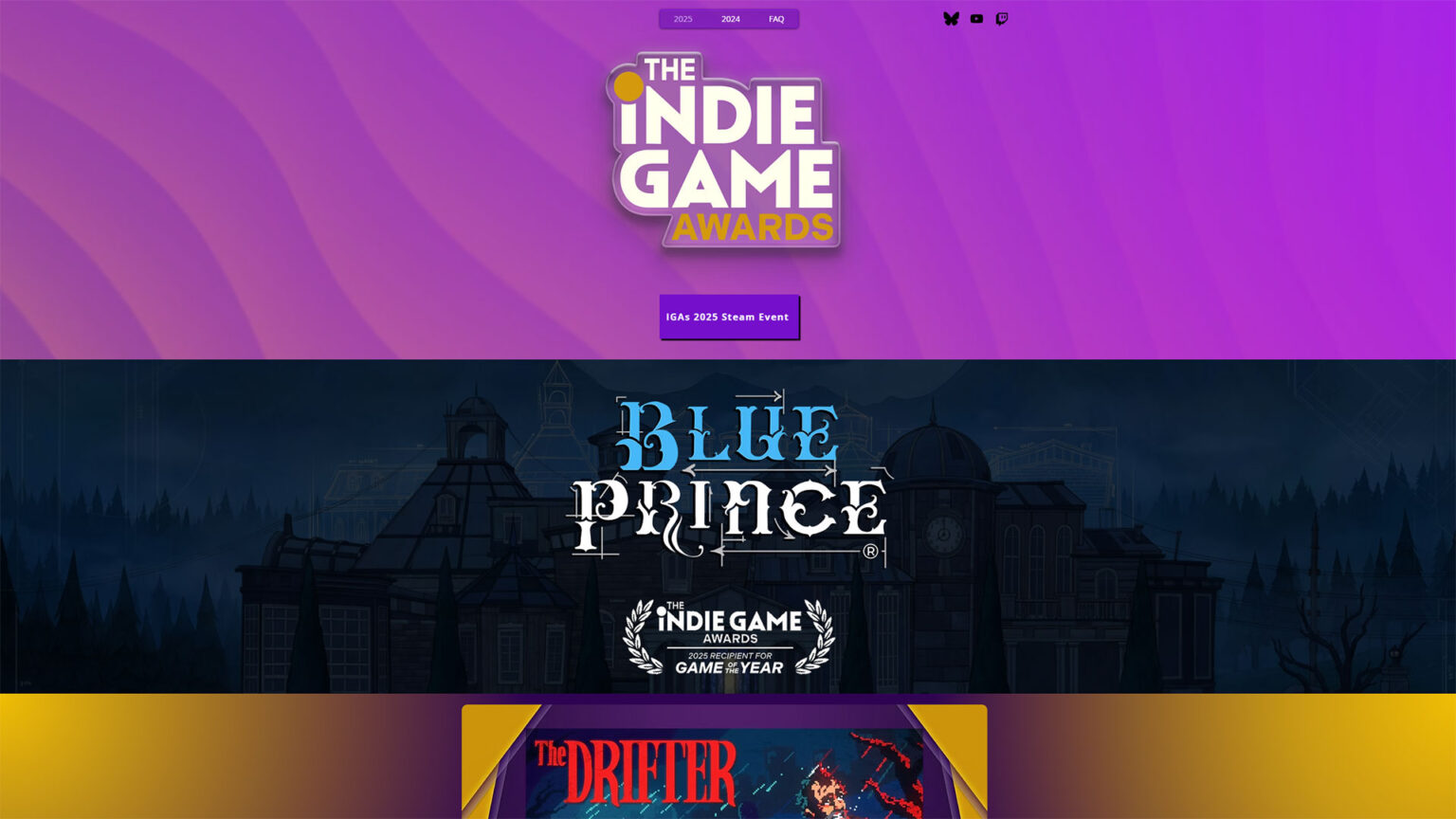Quick Verdict
While Satisfactory had an existing template in Factorio to serve as inspiration, this first-person factory-building simulator manages to build on it in ways that exemplify proper game design. It’s a game that nails the balance between scale and complexity when you’re chasing efficiency, while giving players the freedom to do things their own way, for the most part. It’s extremely satisfying when you manage to expand an intricate factory to accommodate a new tier of resources, with increasingly complex goals as you progress.
To be clear, Satisfactory is not a game for everyone. It can get tedious and even frustrating at times. It can also be a nightmare for players who are obsessed with perfection. It’s a game that rewards planning ahead and constant iteration while encouraging you to explore the world it’s built. If you enjoy the grind for optimization, though, you’ll find very few games that do it this well.
Gears in Motion

If there were ever a game with a description that didn’t sound like a game at all, it would be Satisfactory. It’s not an exaggeration to say it feels like work at times, especially since the core gameplay revolves around solving problems and optimizing systems. But for those who don’t understand what type of game Satisfactory is, let’s start there. It’s a first-person factory-building simulator from Coffee Stain Studios that launched into Early Access in March 2019. During those years of development, the team continued to build on its foundation, listening to community feedback and improving the game in ways very few Early Access titles do. At its core, the gameplay loop is all about transforming raw materials into valuable products, which then fuel milestones and objectives. It all takes place on an alien planet, where your job is to build, optimize, and expand a massive factory network.
As you can imagine, the game starts off fairly simple and straightforward, but progressively gets more difficult and complex. Depending on the starting area you choose, you may have to travel great distances to discover certain resources, while upgrading your equipment to deal with the native wildlife. Combat’s there, but it’s not the game’s strong suit. The weapons are pretty basic, and don’t expect too much from the monsters you run into. The good news is, if you’re finding the enemies annoying, there is a passive mode you can enable to focus on exploration and building.
Engineering Euphoria
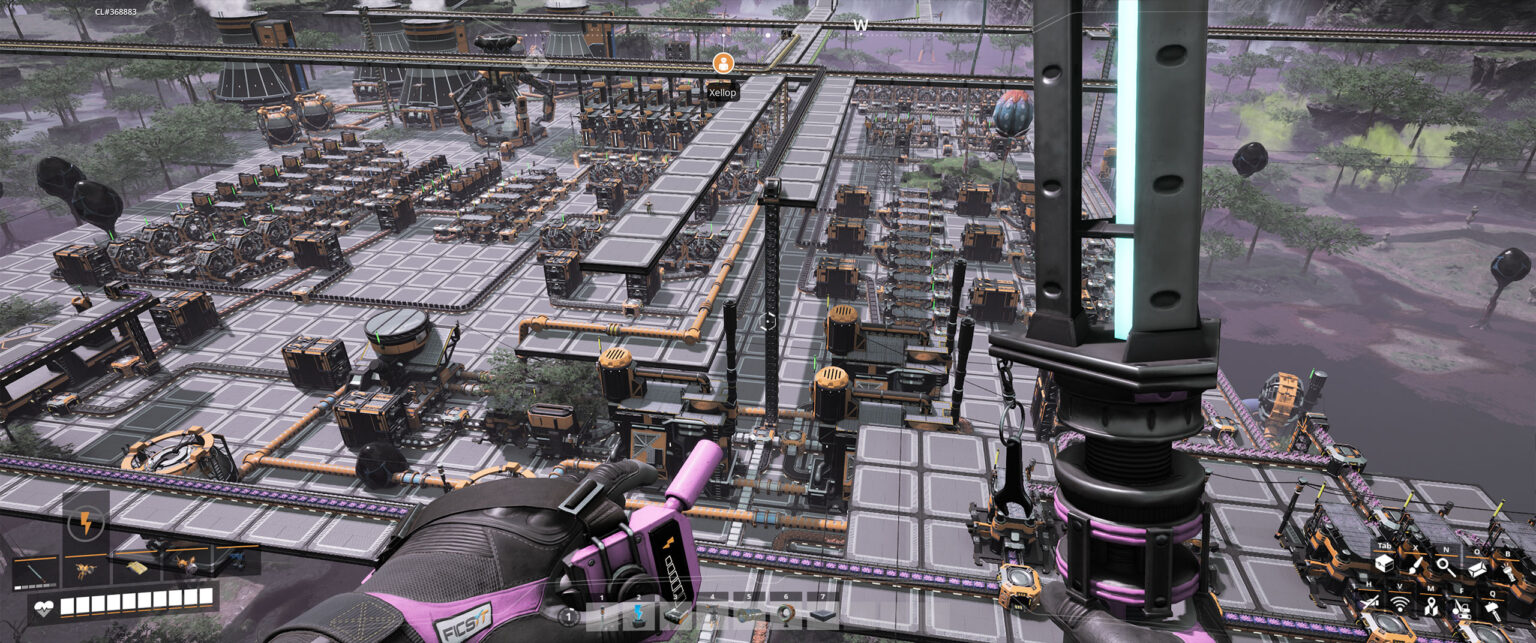
Throughout Satisfactory’s years in Early Access, we would revisit the game from time to time to see what major features Coffee Stain Studios had added. With our past experience, we decided to tackle the Dune Desert starting area for this 1.0 playthrough. Dubbed the toughest option, it definitely threw some interesting challenges our way. The game’s early hours were familiar: get those miners going for iron and copper, set up a basic power grid, and start expanding. Since we were playing multiplayer, we split up our duties so one person could focus on delivering milestones to unlock technology. One of the best parts of Satisfactory is that you don’t have to automate everything if you don’t want to. Many, but not all, of the game’s components can be manually crafted at a crafting bench, and sometimes that was the most optimal way of completing a milestone.
The gameplay loop is pretty straightforward. You kick things off by mining a resource, then turn those raw materials into finished products. As you unlock more milestones by turning in specific items, those finished products become components for more complicated items, which means adding more production lines and buildings to your factory. Eventually, you’ll gain access to the Space Elevator, which is the game’s main objective. To complete those objectives, however, you’ll have to set up factory automation, as the required items need to be transported directly into the Space Elevator. You can get around this, though, if you’re even a little bit creative.
Building Blocks
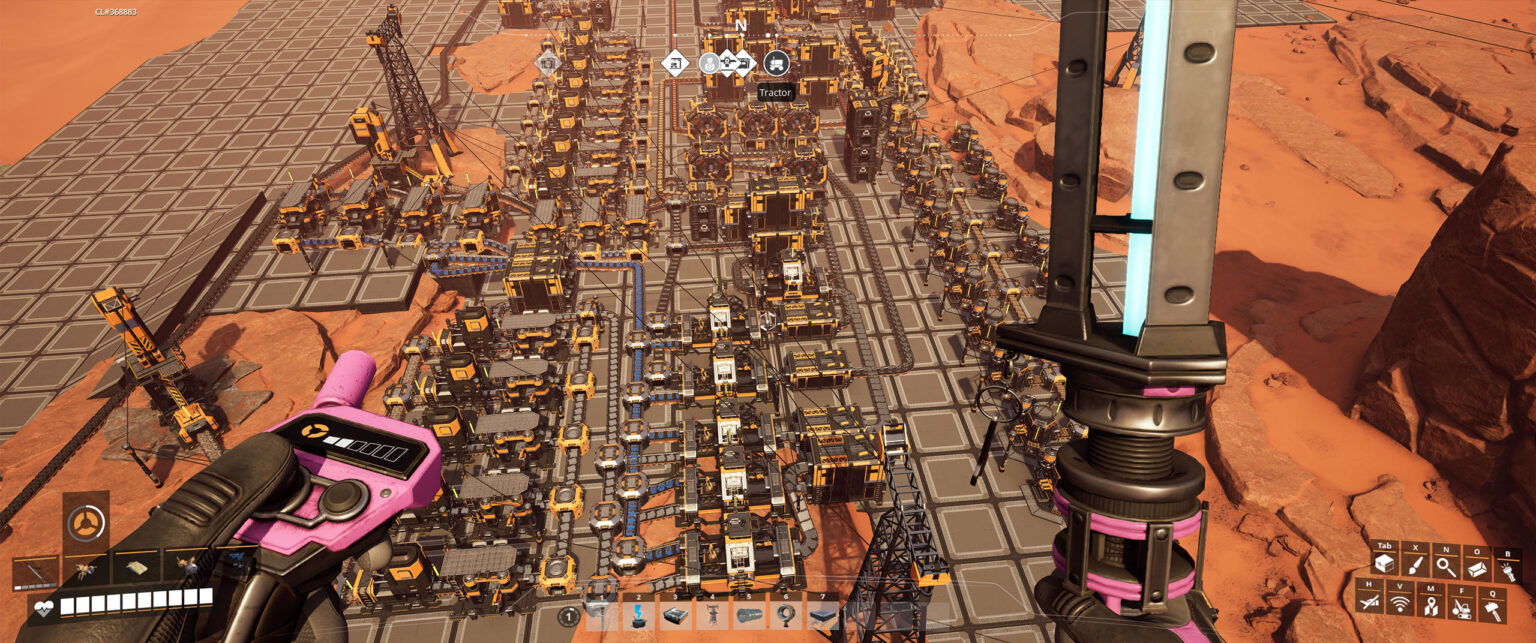
Satisfactory excels at making players feel like real engineers, and it is very satisfying once a complex assembly line is humming along efficiently. There are plenty of variables to consider and math to be done if you want a truly efficient factory with maximum throughput, and you’ll want to start reading up on load balancing if that’s your goal. Eventually, you’ll need to explore the alien world for new resources. Our first real adventure from our starting area in Dune Desert was to locate oil, and fortunately by then, we had the Hypertube unlocked. The Hypertube is one of multiple transportation systems the player can build and take to quickly traverse across the vast world. Other mobility options include the choice of a jetpack or hoverpack, and even a zipline if you build a proper path with power towers.
The game strikes a great balance between freedom and structure. While you clearly have objectives and milestones to complete, how you complete those is really up to you. There’s no right answer, and if you choose to do it in the messiest way possible, cool. There’s a reason why there are so many “spaghetti factories” on the internet. We love the fact that we can build a minimalist and efficient factory if we want, or an overly complex and engineered monstrosity that’s confusing to even look at. This also enables multiple playthroughs to feel unique.
Streamlining Success
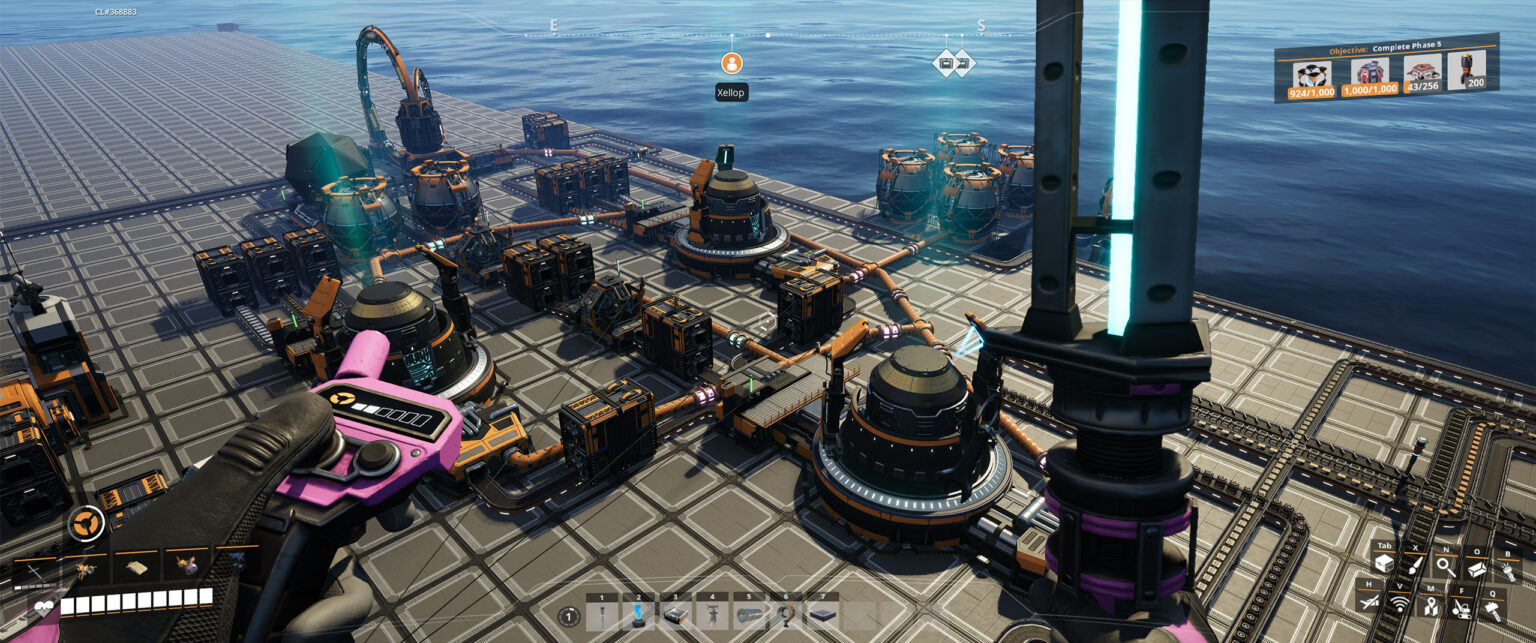
The biggest criticism I have for Satisfactory is that it feels like it overstays its welcome if you want to roll credits. By the time we hit the final phase of the Space Elevator, I was rolling my eyes. Instead of sparking creativity, it felt more like a tedious grind to the finish line. One of the ingredients for the final objective involves iron plate and concrete, two of the most basic and earliest components in the game. Others might find it clever or even welcoming that some of the ingredients are likely backed up and filling a container at this point in time, but it really felt like a chore to wrap up the final phase.
Another major hurdle for players is how unwieldy and overwhelming it can be to manage the power grid. Eventually, you’ll unlock the ability to speed up your production buildings, but it comes at a massive power cost. For our playthrough, we had one person who basically dedicated the entire time to constructing and managing power output. Managing a growing factory’s power grid is a minigame in and of itself, which can be very gratifying once you have it all set up properly.
Building a Better Tomorrow
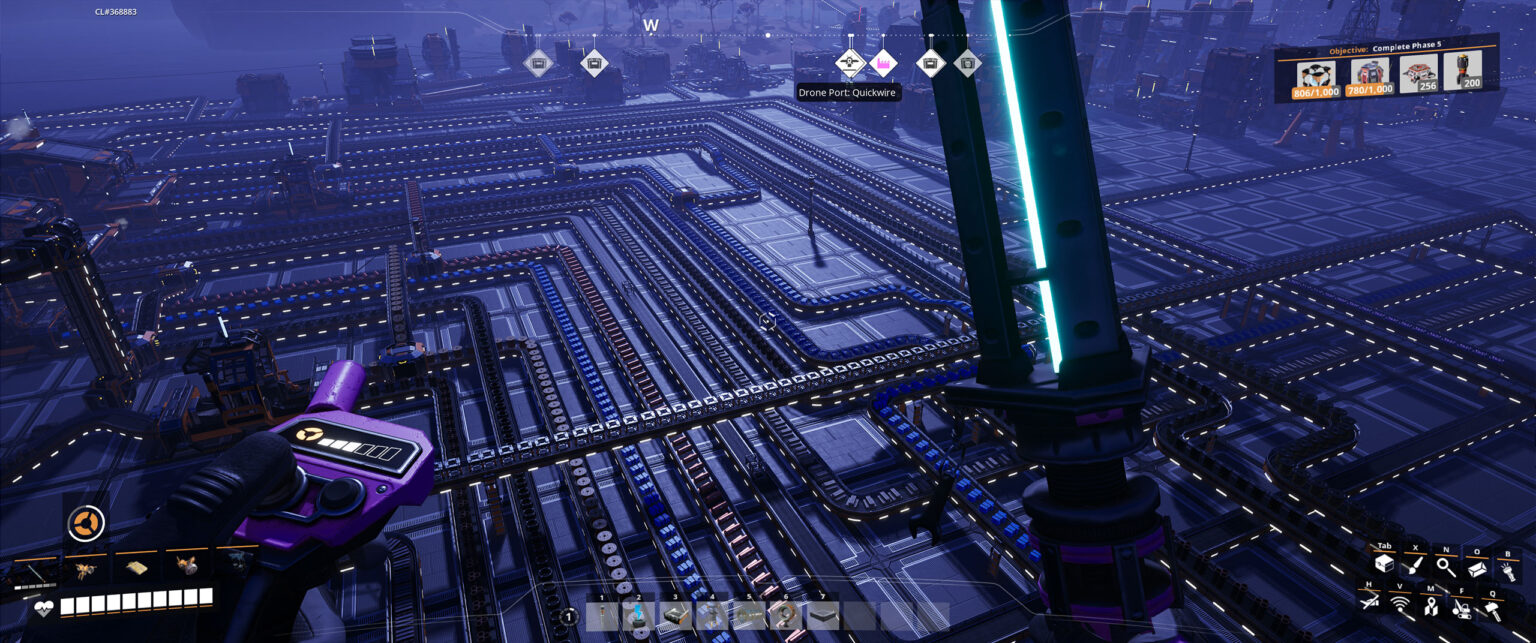
Starting in Dune Desert really made us appreciate how much Satisfactory has changed over the years. I ultimately did the same thing I did last playthrough, which was to cover an entire giant body of water with foundation to create a megafactory. Satisfactory’s design opts for convenience over realism, giving you a lot of freedom when it comes to laying down foundations and building your assembly lines, even creating seemingly floating platforms to expand production. With how spread out the resources were, we ended up building several factories that focused on specific ingredients, using drones to bring them all back to the megafactory for production. While it was far from optimal—it took us over 157 hours to complete all the objectives—it was fun having to solve new problems that we introduced ourselves.
Satisfactory shines as both a creative sandbox and a strategic puzzle game. The truth is, though, it’s not a game made for everyone. If you enjoy these types of games, Satisfactory is one of the best of its kind. In fact, if you want a first-person experience, it is probably the best in the genre. But if the gameplay loop doesn’t remotely sound interesting to you, chances are you won’t find the game engaging or fun to play. The satisfaction you get from Satisfactory comes from problem-solving and watching the factory work on its own. If that sounds or feels like work to you, it’ll probably feel the same inside the game. If you’re even a little curious, we highly recommend giving it a shot. We’ve logged over 400 hours in Satisfactory through the years, and while not every moment was memorable, most were pretty satisfying.
Satisfactory exited Early Access on September 10, 2024 on PC. This review is based on a purchased retail copy of the game on PC. While FullCleared does have affiliate partnerships, they do not influence our editorial content. We may, however, earn commissions for products purchased via affiliate links.

